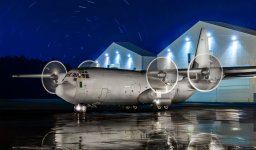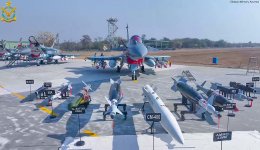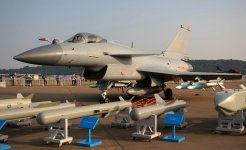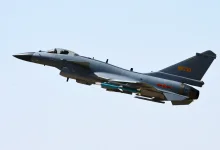Egypt selects Chinese J-10Cs instead of upgrading its F-16Vs
By
Boyko Nikolov on September 7, 2024
View attachment 63533
The Egyptian Defense Ministry has reportedly placed its first-ever order for Chinese fourth-generation fighters, specifically the J-10C, as of August 19. This decision underscores Cairo’s ongoing efforts to deepen strategic and economic ties with Beijing, following its recent entry into the Chinese-led BRICS bloc earlier this year.
With this acquisition, Egypt becomes the second country to procure the J-10C after Pakistan. Meanwhile, unconfirmed reports suggest that Sudan may have been negotiating a similar deal before insurgency complications in April 2024 delayed the talks. The J-10Cs are expected to replace Egypt’s aging fleet of F-16 Fighting Falcons as they are gradually phased out.
Interestingly, there is speculation that Egypt’s decision to acquire the J-10C may be an alternative to U.S. proposals for the F-16V upgrade package. The J-10C offers superior combat capabilities compared to the enhanced F-16 model, all at a comparable cost.
The F-16V fleet
Beyond the three squadrons of MiG-29M fighters Egypt ordered from Russia in 2015, most of the country’s fourth-generation fighters come from Western sources. The potential purchase of J-10C fighters marks a significant shift, reflecting the evolving political landscape.
Recent reports suggest Egypt may be ordering J-10Cs, as Egyptian officials voice increasing concerns over the Western-backed Israeli military operations in Gaza. Officials in Cairo fear these operations may force the Gazan population to seek refuge in Egypt.
This possible acquisition is pivotal when considering Egypt’s current fighter fleet, which has long been viewed as inadequately prepared for a major interstate conflict.
The nearly 200 F-16s forming the backbone of the fleet are seen as some of the least capable fourth-generation fighters globally. They’re heavily downgraded and restricted to obsolete Cold War-era weaponry, completely lacking modern beyond-visual range air-to-surface capabilities.
Political hurdles
View attachment 63536
Over the years, Egypt has encountered several political hurdles in modernizing and arming its F-16s with advanced weaponry. A significant challenge has been its intricate relationship with the United States. Since Egypt’s F-16 fleet primarily comes from the U.S., arms deals with Washington are often bound by stringent political conditions.
U.S. foreign policy decisions often dictate the flow of advanced upgrades and weapon systems, based on concerns such as human rights, regional conflicts, or a nation’s alliances. For instance, following the military removal of President Mohamed Morsi in 2013, the U.S. temporarily suspended military aid, which delayed essential upgrades for Egypt’s aging F-16s.
This, coupled with U.S. control over spare parts and strict operational restrictions on the aircraft, significantly hampers Egyptian air power.
Moreover, Egypt’s French-supplied Rafale fighters, ordered in 2015, also experience notable performance downgrades. Most notably, the absence of Meteor air-to-air missiles severely limits their combat capabilities.
‘Regional hotspots’
France’s Rafale jets, although free from U.S. political constraints, have faced their own set of geopolitical challenges. When Egypt attempts to diversify its arms purchases, including reaching out to Russia and China, it often conflicts with its Western suppliers
Western governments, including France, have occasionally been reluctant to equip Egypt with the latest weapons systems or upgrades due to worries about how these might be used in regional hotspots like Libya or Yemen. This balancing act between maintaining good relations with Western powers and non-Western allies has complicated Egypt’s efforts to modernize its fleet with state-of-the-art technology.
Additionally, Egypt’s shifting geopolitical landscape in the Middle East has influenced its defense relationships. The U.S. and European countries have aimed to retain influence over Egypt’s military activities by controlling access to advanced weaponry.
Due to restrictions on integrating advanced air-to-air missiles and radar technologies, Egypt’s efforts to modernize its F-16 and Rafale fleets have been hampered. As a result, Egypt has been seeking more independent options for its defense supplies, increasingly turning to countries like China, which impose fewer political conditions and restrictions. This trend has driven Egypt’s recent shift toward the Chinese J-10.
The capable J-10C
In contrast, the J-10C will provide Egypt with access to two of the world’s most capable air-to-air missile classes: the PL-10 and PL-15. Western sources have acknowledged that these Chinese missiles significantly outperform their American counterparts, the AIM-9X and AIM-120D.
For Egypt, which has been using Cold War-era AIM-9 variants and the outdated AIM-7, this shift signifies a technological leap spanning several decades in performance. The J-10C will stand as the most capable fighter aircraft in Egypt’s arsenal in terms of air-to-air combat and may even be the most advanced on the African continent.
The fighter has shown in simulated combat that it can outperform modern ‘4+ generation’ fighters almost twice its size, including Russian Su-35s and Chinese J-16s. Its array of compatible air-to-ground ordnance is extensive.
The J-10C is viewed as significantly more capable than any fighter in the Israeli fleet, except for its two squadrons of F-35s. This could potentially push Israel to expand its F-35 orders and invest in more advanced air-to-air missiles for its aircraft
https://bulgarianmilitary.com/amp/2...inese-j-10cs-instead-of-upgrading-its-f-16vs/











